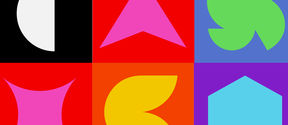The documents required from all applicants are listed on the Aalto University website (https://www.aalto.fi/en/study-at-aalto/applying-to-masters-programmes). In addition, applicants to this study-option are required to provide the following study-option-specific documents:
Document 1: Portfolio
For your portfolio, choose a selection of projects and explorations which best reflects your present knowledge, skills and experience. We appreciate careful curation of your previous projects, but also consider how your portfolio can best communicate the direction towards which you would like to take your practice.
We suggest annotation that gives us some information on the background and brief explanation of the process of your projects. If the work is done in collaboration, you should clearly describe your role.
Instructions for the portfolio:
Pdf file (with links to online/video content where applicable) maximum 15 pages
Any time-based work should not exceed 5 min. in total
Maximum size for the portfolio is 1.0 GB. Name the file as: Portfolio-surname-firstname.pdf
Document 2: Preliminary assignment
Create a visualisation of a topic that feels urgent to you at the moment.
Visualisation can be understood broadly, so we welcome either fact or fiction: it is up to you and a part of your challenge, whether your visualisation is expressive or data-based; typography or image; static or in motion.
Think of the assignment as an extension of your portfolio: an opportunity to indicate where you might want to take your practice next.
The assignment is also a chance to show your skills in visual communication and conceptual thinking, and to let us know more about who you are, and which questions are important to you.
The format and medium of your visualization is up to you, but the end result should be documented as a separate file pdf. No existing work should be used: please complete original work for this assignment.
Maximum size for the Preliminary Assignment is 1.0 GB. Name the file as: Preliminary_Assignment-lastname.firstname.pdf
The preliminary assignment must be added as additional .pdf document.
Document 3: Designer Statement
Regard your Designer Statement as a letter where you briefly describe your design practice, and where you see yourself at the moment. Let us know how you like to work, which questions and frameworks are urgent to you, and how you would like to redefine your practice.
You can also describe your own mix of interests towards the intertwining competence areas developed in our curriculum: information design, visual narrative, and type & written language.
As the central task in the 2-year MA studies is the thesis project, we appreciate learning about your topics of interest and exploration that might lead to thesis work. Note that any plans you describe at this stage are not binding.
Document 4: CV
In your CV, please list your education, work experience, and skills, together with possible exhibitions, publications, awards, grants, and study trips relevant to your practice.
Language of application documents
The application documents must be submitted in English.











